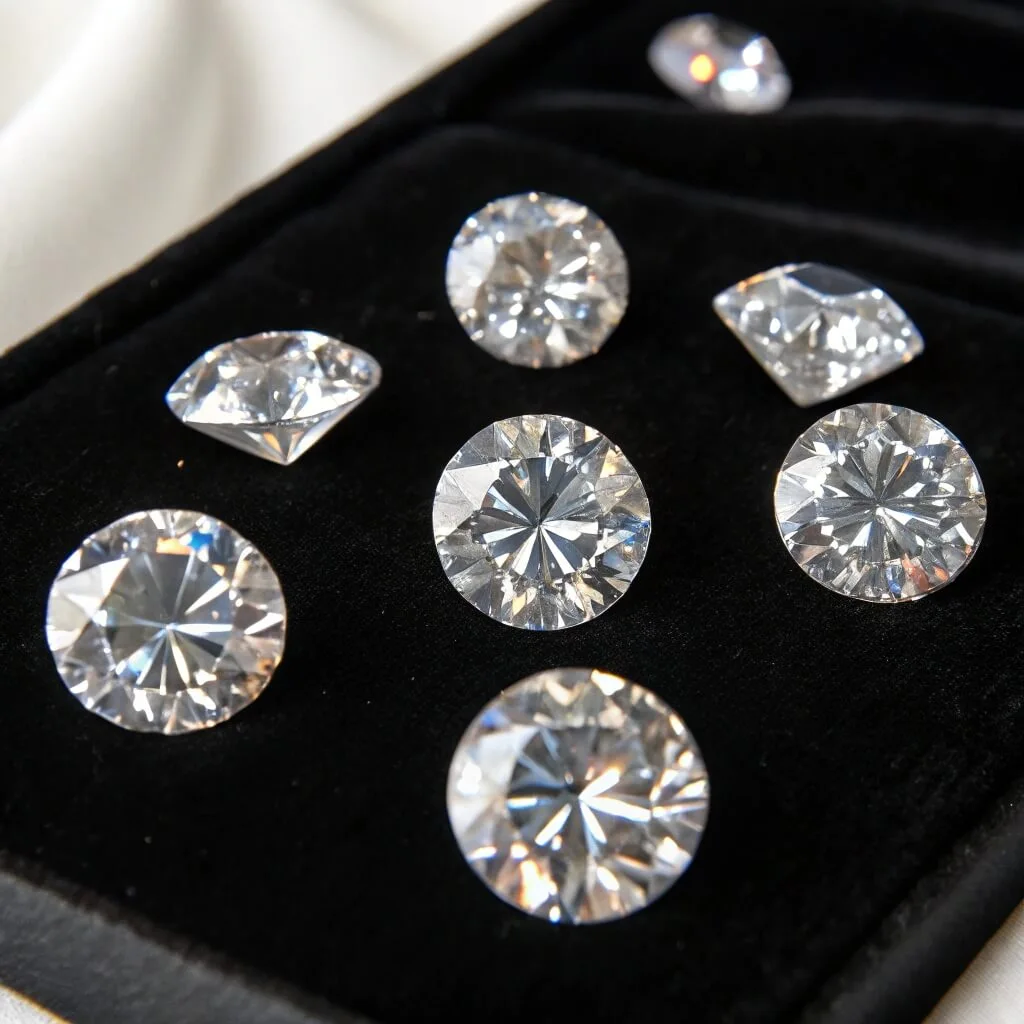
Are Lab-Grown Diamonds the Ethical Future of Jewellery
UK shoppers are increasingly conscious of their purchases’ impact on the planet and society. This is especially true in the jewellery industry, where questions around ethical sourcing and sustainability have sparked new interest in alternatives to traditionally mined gems. Many now ask:
- Are lab-grown diamonds real diamonds?
- Is there a quality difference between mined and lab-created stones?
- How do lab-grown diamonds affect the environment?
These questions reflect a shift in buyer behaviour that prioritises transparency, quality, and values-driven decisions. This article explores how lab-grown diamonds are changing the UK jewellery market and why more people consider them a modern, ethical choice.
Understanding Lab-Grown Diamonds
Lab-grown diamonds are created using technology replicates the high-pressure, high-temperature conditions under which natural diamonds form. They are chemically and physically identical to mined diamonds and are graded using the same cut, colour, clarity, and carat weight standards.
What sets them apart is the source. Lab-created stones are developed in controlled environments, eliminating the need for large-scale excavation and reducing the social and environmental challenges often associated with traditional mining.
Environmental and Ethical Considerations
One of the most compelling reasons shoppers turn to lab-grown diamonds is their lower environmental impact. Traditional diamond mining disturbs ecosystems, consumes vast water, and contributes to soil erosion. In contrast, lab-grown options require significantly less land and water.
According to research, creating a one-carat mined diamond produces around 1100 kg of CO2, while a lab-grown diamond generates approximately 510 kilograms. Meanwhile, the Natural Diamond Council reports that many modern diamond mining operations now use renewable energy, but lab-grown diamonds still come out ahead in terms of carbon footprint overall.
Lab-created diamonds are a compelling alternative for shoppers who value sustainability and ethical sourcing.
Price and Value Comparison
Price is another factor driving interest. Lab-grown diamonds typically cost 30 to 40% less than mined diamonds of similar quality. This means buyers can afford larger or higher-clarity stones without exceeding their budget.
It’s worth noting, however, that resale value may differ. While mined diamonds often hold value due to perceived rarity, lab-grown diamonds are relatively new, and their secondary market is still developing.
That said, many shoppers today prioritise sentimental or personal value over resale. Lab-grown diamonds deliver brilliance and authenticity without compromise for engagement rings, anniversary gifts, or milestone celebrations.
How Lab-Grown Diamonds Align with Modern Style
Contemporary jewellery trends reflect a preference for minimalism, individuality, and conscious choices. Lab-grown diamonds fit well into this design ethos. They allow wearers to express themselves without supporting practices that may contradict their values.
Retailers have taken note. Collections now feature lab-created diamonds, from solitaire rings and tennis bracelets to drop earrings and wedding bands.
Lab-grown diamonds offer a wide range of elegant, expertly cut stones to shoppers who want quality and ethics in one package.
Are Lab-Grown Diamonds Right for You?
Here are a few key points to help make an informed decision:
- Appearance: Lab and mined diamonds are identical to the naked eye.
- Price: Lab-grown diamonds offer better value for similar quality.
- Ethics: No association with conflict mining or labour exploitation.
- Environmental impact: Significantly lower resource usage.
Lab-grown diamonds are worth considering if you value clarity in your gemstone purchase.
Common Misconceptions
Some shoppers still believe that lab-grown diamonds are fake or inferior. This is incorrect. Synthetic diamonds like cubic zirconia or Moissanite are entirely different materials. Lab-grown diamonds, by contrast, are real diamonds.
Another concern is that lab-grown stones lack uniqueness. However, like mined diamonds, each one forms with slightly different inclusions and characteristics, giving it a distinct identity.
The UK Market is Shifting
Consumer interest in lab-grown diamonds is rising across Europe, and the UK is one of the fastest-growing markets. According to Cognitive Market Research, the UK lab-grown diamond market is projected to grow at a compound annual growth rate (CAGR) of 9.1% between 2023 and 2030, driven by increasing demand for sustainable and ethical jewellery choices.
Retailers are responding by increasing inventory and offering more design options to meet this growing demand.
Final Thoughts
Lab-grown diamonds present a smart, ethical option for today’s jewellery buyers. They offer the same brilliance, clarity, and luxury appeal as mined diamonds, without the environmental cost or ethical grey areas.
As sustainability continues influencing buying habits, lab-grown diamonds are well-positioned to become a leading choice for conscious consumers in the UK.
FAQs
Are lab-grown diamonds real?
Yes. They are chemically, physically, and optically identical to mined diamonds.
Can you tell the difference between lab-grown and natural diamonds?
No. Even trained gemologists require specialised equipment to identify their origin.
Are lab-grown diamonds cheaper?
Yes. They typically cost 30 to 40% less than mined diamonds.
Are they a good choice for engagement rings?
Absolutely. They offer exceptional quality and ethical reassurance.
Do lab-grown diamonds have resale value?
They do, but the market is still maturing. Most buyers purchase for long-term wear rather than investment.
Where can I buy lab-grown diamonds in the UK?
Trusted retailers like Chisholm Hunter offer UK shoppers a wide range of certified lab-grown diamonds.



